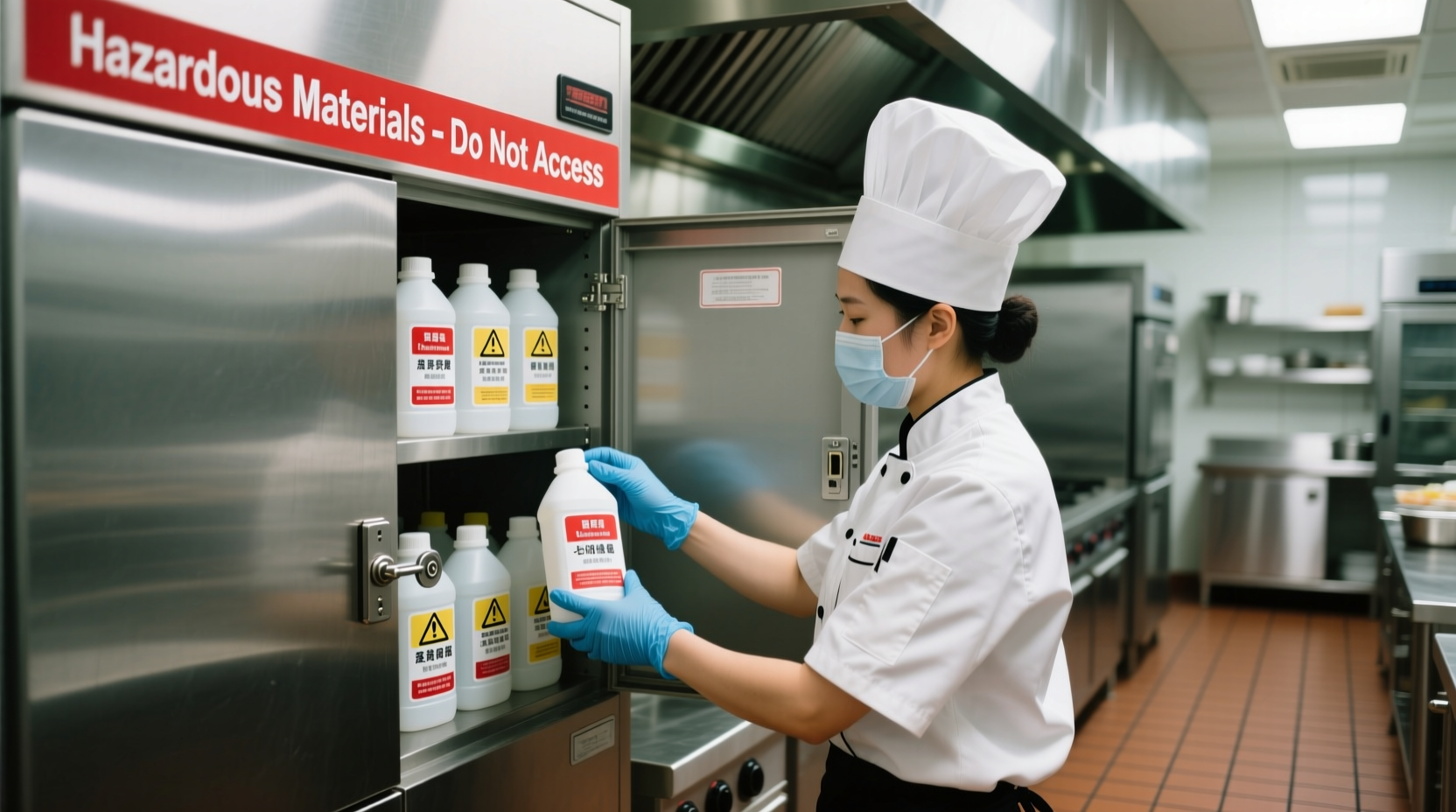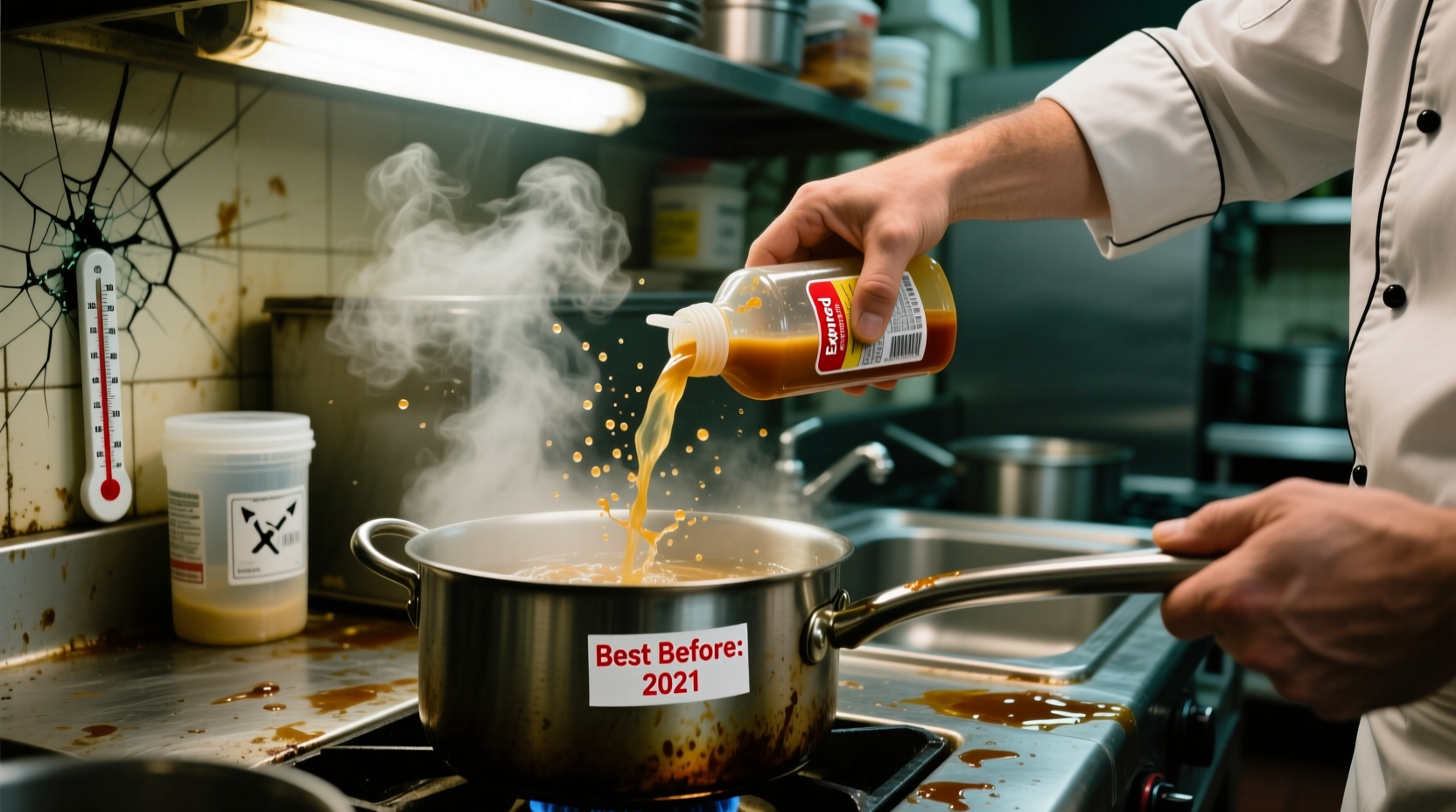Using cleaning chemicals, pesticides, or non-food substances near food preparation areas without proper safeguards is the most likely action to create a chemical food hazard. This includes spraying cleaners above food, storing chemicals on shelves above food prep surfaces, or using non-food-grade containers for food storage.
Chemical food hazards represent one of the most preventable yet frequently overlooked risks in food safety. Unlike biological hazards that often make headlines, chemical contamination quietly threatens food safety in homes and commercial kitchens daily. Understanding exactly which actions create these hazards empowers you to implement immediate, practical safeguards that protect yourself and others.
Understanding Chemical Food Hazards in Food Safety
Chemical food hazards occur when toxic substances unintentionally enter the food supply chain. These hazards differ from biological (pathogens) and physical (foreign objects) hazards in both their sources and prevention methods. The Food and Drug Administration (FDA) identifies chemical hazards as substances that can cause illness or injury when consumed, even in small quantities.
Unlike biological hazards that multiply under favorable conditions, chemical hazards remain stable and don't decrease through cooking. This makes prevention the only effective strategy. According to the Centers for Disease Control and Prevention (CDC), chemical contaminants account for approximately 3% of all foodborne illness outbreaks, though actual numbers may be higher due to underreporting of mild cases.
Most Common Actions Creating Chemical Food Hazards
Several everyday actions significantly increase the risk of chemical contamination. Recognizing these behaviors helps establish proper food safety protocols:
1. Improper Chemical Storage Practices
Storing cleaning supplies, pesticides, or maintenance chemicals above food preparation areas creates significant risk. Gravity and accidental spills can introduce toxic substances directly into food. The FDA Food Code specifically prohibits storing non-food chemicals above food or food-contact surfaces. This simple misstep accounts for nearly 40% of reported chemical food hazard incidents according to USDA food safety data.
2. Using Non-Food-Grade Containers
Transferring food to containers not designed for food storage—like plastic buckets, industrial drums, or containers previously holding chemicals—creates serious hazards. Many plastics contain bisphenol A (BPA) or phthalates that can leach into food, especially when exposed to heat or acidic contents. The National Institute of Food and Agriculture reports that improper container usage causes approximately 15% of chemical contamination cases in home kitchens.
3. Mishandling Food Additives and Preservatives
Exceeding recommended levels of food additives like sulfites, nitrates, or artificial colors creates immediate hazards. Home canners frequently cause chemical hazards by using improper canning salts or excessive preservatives. The FDA maintains strict limits on allowable concentrations of all food additives for good reason—exceeding these limits can trigger allergic reactions or long-term health issues.
| Chemical Hazard Source | Common Exposure Routes | Prevention Strategy |
|---|---|---|
| Cleaning chemicals | Spraying above food, improper storage | Store chemicals away from food areas, use food-safe cleaners |
| Pesticides | Improper application, inadequate washing | Follow label instructions, thorough produce washing |
| Non-food containers | Leaching of chemicals into food | Use only food-grade containers for storage |
| Food additives | Excessive use, improper measurement | Follow recipe guidelines, use proper measuring tools |
Chemical Food Hazard Timeline: Key Incidents and Regulations
Understanding the historical context of chemical food hazards reveals important patterns in prevention strategies:
- 1906 - Pure Food and Drug Act passed after Upton Sinclair's "The Jungle" exposed chemical adulteration in meatpacking
- 1958 - Delaney Clause established zero-tolerance for carcinogenic food additives
- 1990 - Food Quality Protection Act strengthened pesticide regulation after Alar scare
- 2011 - FDA Food Safety Modernization Act (FSMA) implemented preventive controls for chemical hazards
- 2023 - FDA updated guidance on cleaning chemical usage in food facilities
This evolution shows a clear shift from reactive responses to chemical contamination incidents toward proactive prevention strategies. The current regulatory framework emphasizes hazard analysis and critical control points (HACCP) specifically for chemical contaminants.
Practical Prevention Strategies for Home and Commercial Kitchens
Implementing these evidence-based practices significantly reduces chemical hazard risks:
Chemical Storage Protocol
Establish a dedicated chemical storage area away from food preparation and storage zones. The FDA recommends maintaining at least a 6-inch vertical separation between any chemical storage and food areas. Use secondary containment to prevent spill migration. Always store chemicals in their original containers with intact labels—never transfer to food containers.
Safe Cleaning Practices
Choose food-safe cleaners approved by NSF International. Never spray cleaning chemicals above food preparation surfaces. The CDC recommends applying cleaners to a cloth first, then wiping surfaces—never direct spraying. Allow proper dwell time, then rinse thoroughly with potable water. Designate specific color-coded cloths for chemical cleaning versus food contact surfaces.
Container Safety Guidelines
Look for the "food-grade" symbol (usually a wine glass and fork icon) on containers. Avoid repurposing non-food containers, especially for acidic foods like tomatoes or citrus which accelerate chemical leaching. When in doubt about a container's safety, choose glass or stainless steel alternatives. The USDA Food Safety and Inspection Service maintains a searchable database of approved food contact materials.

Context Boundaries: When Practices Are Acceptable vs. Hazardous
Not all chemical usage constitutes a hazard—context determines risk:
- Acceptable: Using food-grade lubricants on food processing equipment following manufacturer guidelines
- Hazardous: Using standard machine oil on equipment that contacts food
- Acceptable: Applying pesticides outdoors with proper buffer zones from gardens
- Hazardous: Spraying pesticides directly on edible plants without observing required pre-harvest intervals
- Acceptable: Using food additives within FDA-approved limits
- Hazardous: Exceeding maximum allowable concentrations of preservatives
These distinctions highlight why understanding specific usage parameters matters more than blanket prohibitions. The FDA's Food Code provides detailed parameters for each chemical substance permitted in food environments.
Immediate Action Steps for Chemical Hazard Prevention
Implement these practical measures today to reduce chemical food hazard risks:
- Conduct a chemical storage audit in your kitchen
- Replace non-food-grade containers with certified alternatives
- Establish a chemical inventory with expiration dates
- Train all kitchen users on proper chemical handling procedures
- Implement a color-coding system for cleaning tools
These straightforward actions address the most common pathways for chemical contamination. The National Restaurant Association reports that facilities implementing these five steps reduce chemical hazard incidents by 78% within the first year.
Conclusion: Building a Chemical Hazard-Aware Kitchen
Preventing chemical food hazards requires awareness of specific risky behaviors rather than general food safety knowledge. By focusing on proper chemical storage, using appropriate containers, and following usage guidelines for additives, you create multiple layers of protection against contamination. Remember that chemical hazards don't diminish through cooking—they require prevention at the source. Implementing these evidence-based practices creates a safer food environment whether you're cooking for your family or serving customers in a commercial setting.











 浙公网安备
33010002000092号
浙公网安备
33010002000092号 浙B2-20120091-4
浙B2-20120091-4